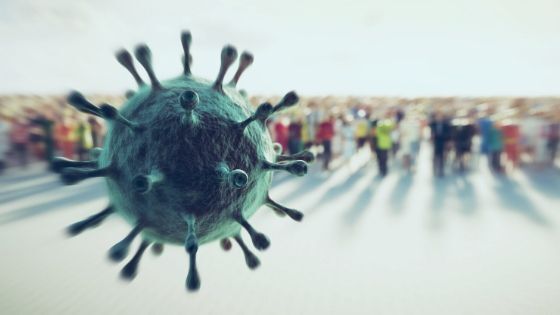“We have to test for COVID-19!”
“Why are the Government not doing more testing!”
“If they tested more like they did in Germany, we wouldn’t be in this mess”
Popular press have been screaming these headline accusations since the beginning of the COVID-19 pandemic, as if this is an obvious solution. That if we had testing, we would have certainty, and life can return to normal, for me, the individual.
However, these tests can give a false impression of perceived safety and promote inequality of health and opportunity between the rich and poor. For example, a mentality might be “I can afford the test because I am rich.” and “If I were tested, I could go back to work”.
Well does it mean that? No. Not really
Unfortunately, it is not as simple as popular journalists might imply.
- First, what testing are they advocating?
- Second, what is the difference between PCR testing and Antibody testing?
- Third, which one of these two current offerings is best for the individual?
The PCR COVID-19 test.
This is the main global testing modality.
It works by looking for the genetic information at the core of the virus, which gets injected into our cells, takes control, and makes millions of new viruses.
In the case of COVID-19, it is a single-stranded RNA molecule.
The testing technique requires releasing this RNA molecule (which is heat stable) from viral particles or infected cells. This is usually done by simply heating or cooking at high temperature (destroying cell proteins and lipids which are heat unstable), extracting and adding genetic amplification enzymes and reagent, so millions of copies of specific characteristic regions of the COVID-19 genetic information are made and are now in such high numbers, that they are physically visible. Although very sensitive, if you don’t have the exact match of initiating genetic sequence, you do not get the amplification and visible signal.
The certainty:
It is very much a yes-no test of if the virus is present in the sample.
The Uncertainties:
The first is the “Present in sample” statement.
What sample and when?
Fortunately, during the initial infection, the virus is present in the upper airways, so a swab is taken from the nose and throat. Later the infection moves to other tissues not easily “sampled”.
Testing of a blood sample is not reliably or consistently positive in patients with COVID-19 disease symptoms.
The second is to see how much of the virus there is and if it is functional.
You can get significant false positives:
The test is very, very sensitive. Positives are occurring in people who never get clinical disease. Was the virus there, but dead? Or did their body fight off the preliminary infection very rapidly, so you never developed noticeable symptoms?
Also:
Could you have previously had the virus? (The test can’t answer that question)
Does this mean you won’t get the virus tomorrow or in future? (The test can’t answer that question – You, therefore, have to repeat tests regularly).
The disadvantages:
Cost:
This is not just an issue of the specialist reagents, but skilled staff and capacity. All these financial, time and skill costs are high.
Time:
The whole process is supposed to take 24hrs, but really is 48hrs or more from sampling to result because of logistic and lab technical demands.
The COVID-19 antibody test
This looks for a particular immune response you have made to the virus when infected.
It is a test to see if a blood sample contains immunoglobulins reacting specifically against proteins produced and found in or on the surface of the viral particles.
Generally, if you have these specific immunoglobulins or antibodies in your bloodstream, they bind to the virus to stop it infecting cells in the first place.
The certainty:
If you have them, you have been exposed to the virus or a similar virus and mounted an immune response.
The uncertainty:
If positive. Am I now immune to COVID-19 and can go back to work? Maybe, possibly, probably!
If negative. Am I not immune – have I not had the infection? The test can’t answer that!
The problem is that very few of these antibody tests are clinically reliable; a positive will generally mean yes, you have been exposed and had an antibody response. A negative might not mean the opposite, as you might have a very good antibody response but not to the viral protein they are using to detect the antibodies against.
This happened very early on in the launch of these antibody test to the market.
Why some COVID 19 “immunity tests” are apparently failing:
Many antibody (Ab) test kits are using the nucleocapsid as a target antigen for immune response detection.
Proper immunity is when the polyclonal response includes antibodies against Viral Envelope functional protein on the outer face that are responsible for attachment and invasion of our cells.
The nucleocapsid protein is on the inner Viral Envelope Coat. The nucleocapsid antibody is largely mopping up after the event and that is why all seriously ill recovered patients have anti-nucleocapsid Ab. Hence a lot of “immune” people are missed, particularly if they were never seriously ill, as they have a good antibody response to viral outer envelope proteins, possibly against a functional spike protein having previously encountered COVID 19 family viruses before and a memory B-cell and a T-Cell clone were successfully triggered. Also, the nucleocapsid is apparently released early in the infection process.
This possibly acts like “Chaff’ released by aircraft to fool radar-guided missiles and similarly confuses the immune response. The non-specific immune response is potentially helping the viral particle release from infected cells.
These tests are detecting an immune response but not seeing the whole picture and missing the antibodies that stop the virus attaching to our cells and invading. They are there in the sample but not looked for in this very simple test.
The tests work very well in detecting immunity response to the COVID-19 nucleocapsid.
But that is not the question. The question is, have I got antibodies that stop me being infected and if I didn’t have them before have I got them now?
Generally, it would appear that you need to have antibodies against the spike protein to have any degree of immunity. But, which part of the COVID-19 spike protein you have developed antibodies against, will also affect how immune you are. Also, this whole immunity is variable.
These tests are considerably cheaper and can be used at home as self or point of care testing! But the reason I have put this is as a disadvantage, is that you don’t receive an informed interpretation of the result.
These tests are going to be the most abused in self-interest “I am clear to reject social distancing” type mentality.

Prof. Ray Iles
Head of Biomedical Science
BSc in Bioanalysis, MSc in Immunology and PhD in Molecular Pathology

